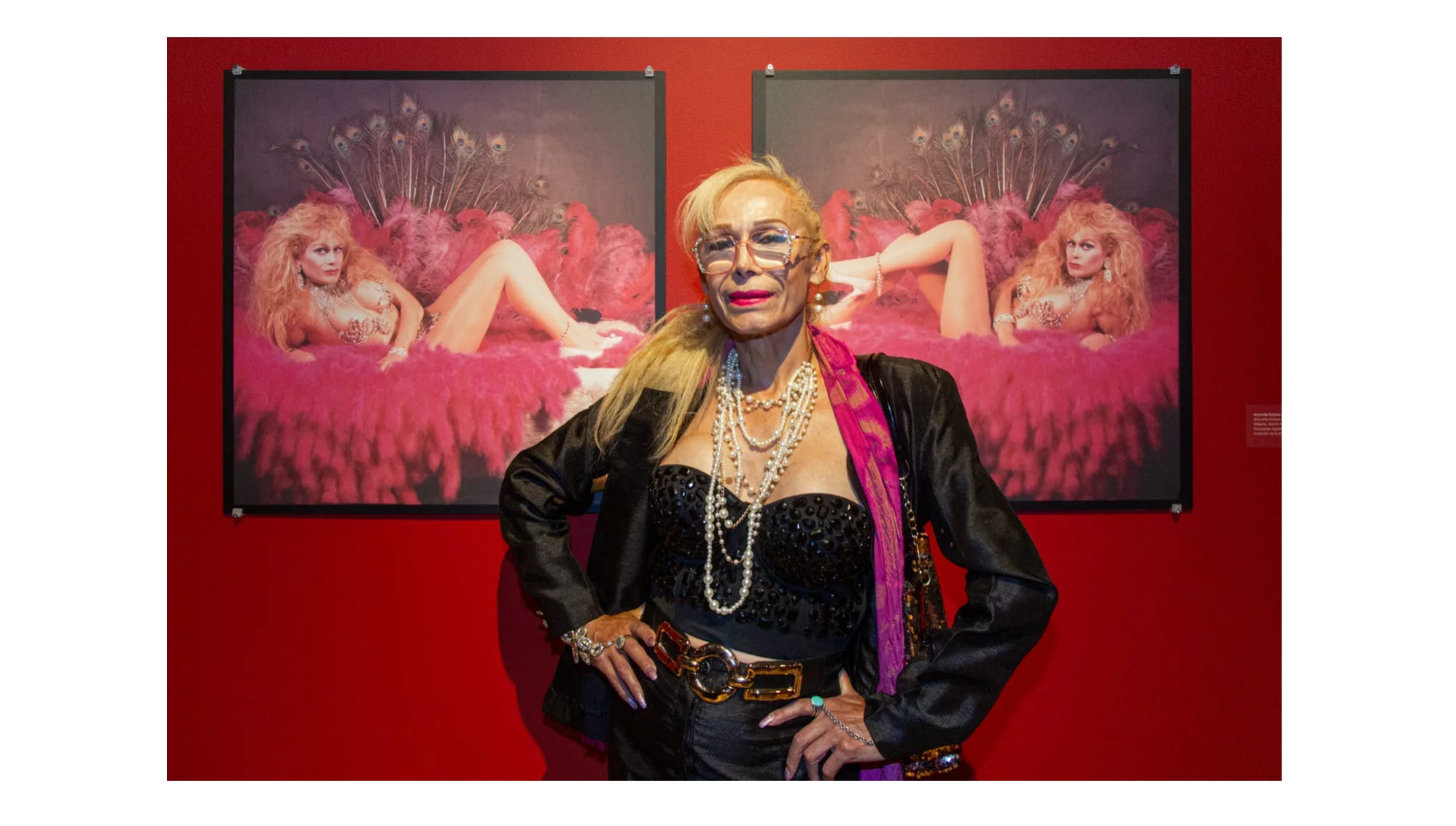Global Roundup: Mexico Trans Women’s Art, Pakistan Women-led Businesses, Romania Protest After Pregnant Mother's Femicide, Spanish Women Disrupt Catholic Apology, Kenya Fashion Show for Larger Women
Antonella Rubens in front of her portraits at the opening reception.Photo Courtesy of Museo de Arte Transfemenino
Four months after opening the Museo de Arte Transfemenino (MAT) in Mexico City, a groundbreaking museum dedicated to showcasing the ongoing artistic and cultural legacies of trans women, curators Sofía Moreno and Rojo Génesis have vaulted their project into new territory. They took over El Museo del Chopo with Plasticidades Encarnadas, a landmark exhibition tracing five decades of trans women’s art and cultural production in México.
Featuring 140 works by 39 trans artists, the show spans 1975-2025 with contemporary art, sculpture, high fashion, nightlife ephemera, textiles, and personal archives — a deliberately incomplete genealogy. As the curators see it, they hope it sparks trans women’s interest in uncovering more of the untold stories: reactivating memory and personal archives, as well as birthing new works into the world.
That 50 year-span reveals a history marked by both violence and worldmaking. During the 1970s and ’80s, police raids would force artists like Gabriela Elliot, Emma Yessica Duvali, and Antonella Rubens into underground torture cells at Tlaxcoaque for “moral misconduct.” These same women, alongside Francis, Terry Holiday and countless other vestidas, an umbrella term for transfeminine identities, transformed México’s nightlife scenes with spectacular travesti shows full of glamor, pleasure, and most importantly, sisterhood.
Their generation paved the way for today’s dolls, but even still, Mexico remains the second-deadliest country for transgender people. While 22 of 32 Mexican states now allow gender‑marker changes and the 2023 Paola Buenrostro Law makes transfemicide punishable by up to 70 years, these symptomatic patches are yet to see real shifts in the material lives of trans women in Mexico.
In an interview with curators Sofía Moreno and Rojo Génesis, them.us asked how Plasticidades Encarnadas emerged after decades of indifference, violence, and cultural erasure that have weighed on so many trans women.
One thing: the first edition of Plasticidades Encarnadas didn’t have a documentary approach. You couldn’t find photos with that nostalgic archival vibe that I hate. I hate exhibitions that are about trans women and focus on how they used to live. I think that anthropological gaze is completely outdated now. So in the first edition, instead of focusing on how trans women lived, we focused on what trans people do, their materiality and what they produce. -Rojo Génesis
Looking ahead, the curators grapple with MAT’s work and ways to ensure it and the archive continue to live on.
This weekend someone asked me, “In ten years, how do you imagine MAT?” And I was like, “Ten years? Girl, please.” It’s wild that two trans women try to sustain a physical space when we don’t even own a space for ourselves … How am I supposed to think about sustaining this space when I don’t have my own home, when I don’t know where I will age? … Now I see myself growing old with this project. If I want a physical space, when will I secure one for myself? If tomorrow the museum closes, where will we take refuge as adults? That’s a challenge in trans culture: We think collectively and sometimes forget our individual needs -Rojo Génesis
Keep reading with a 7-day free trial
Subscribe to FEMINIST GIANT to keep reading this post and get 7 days of free access to the full post archives.


